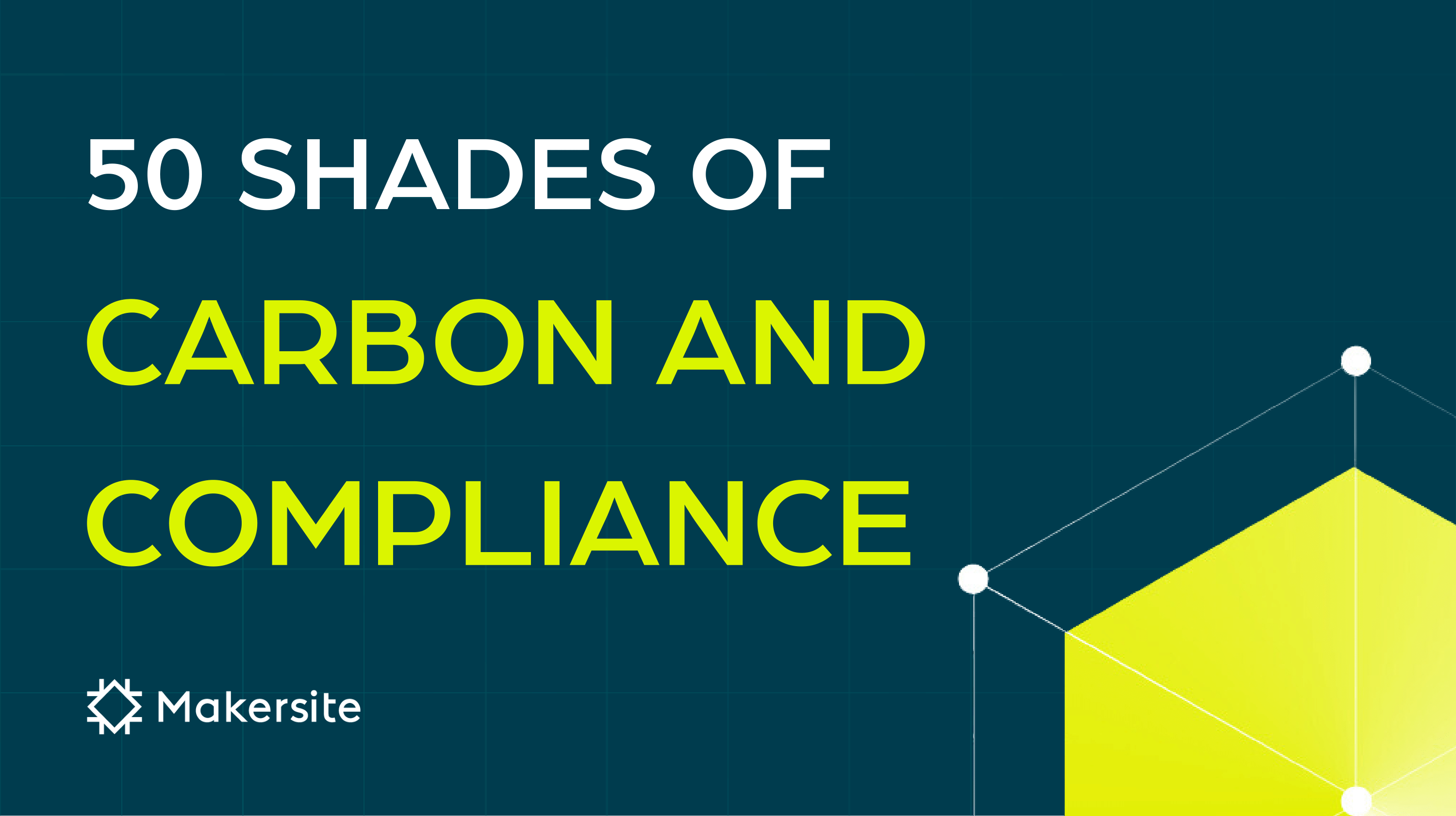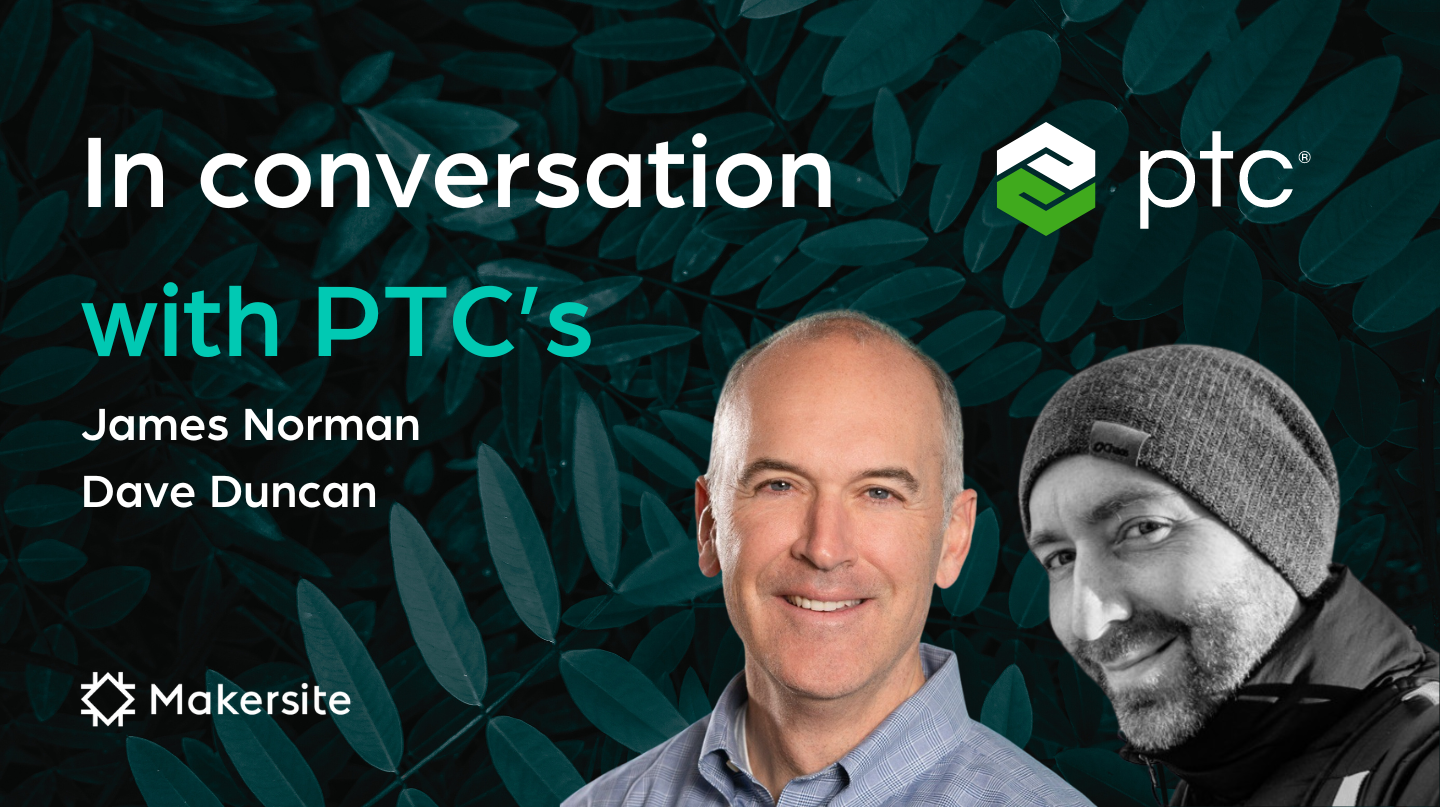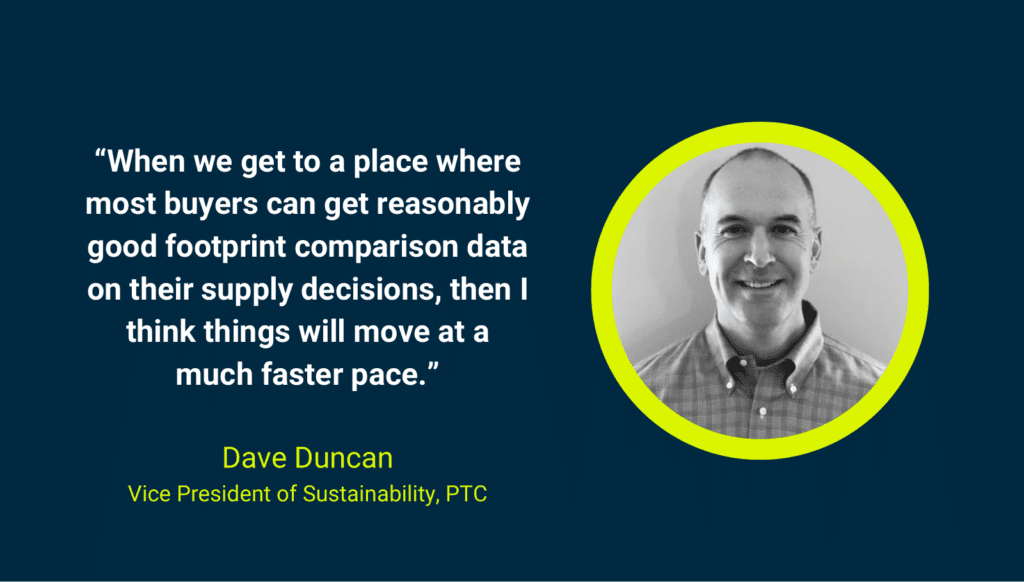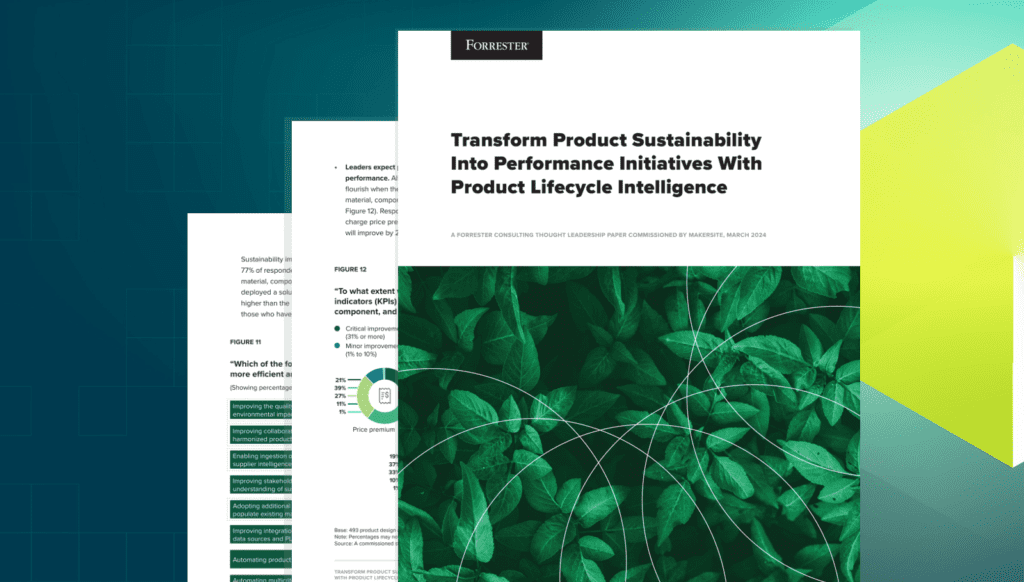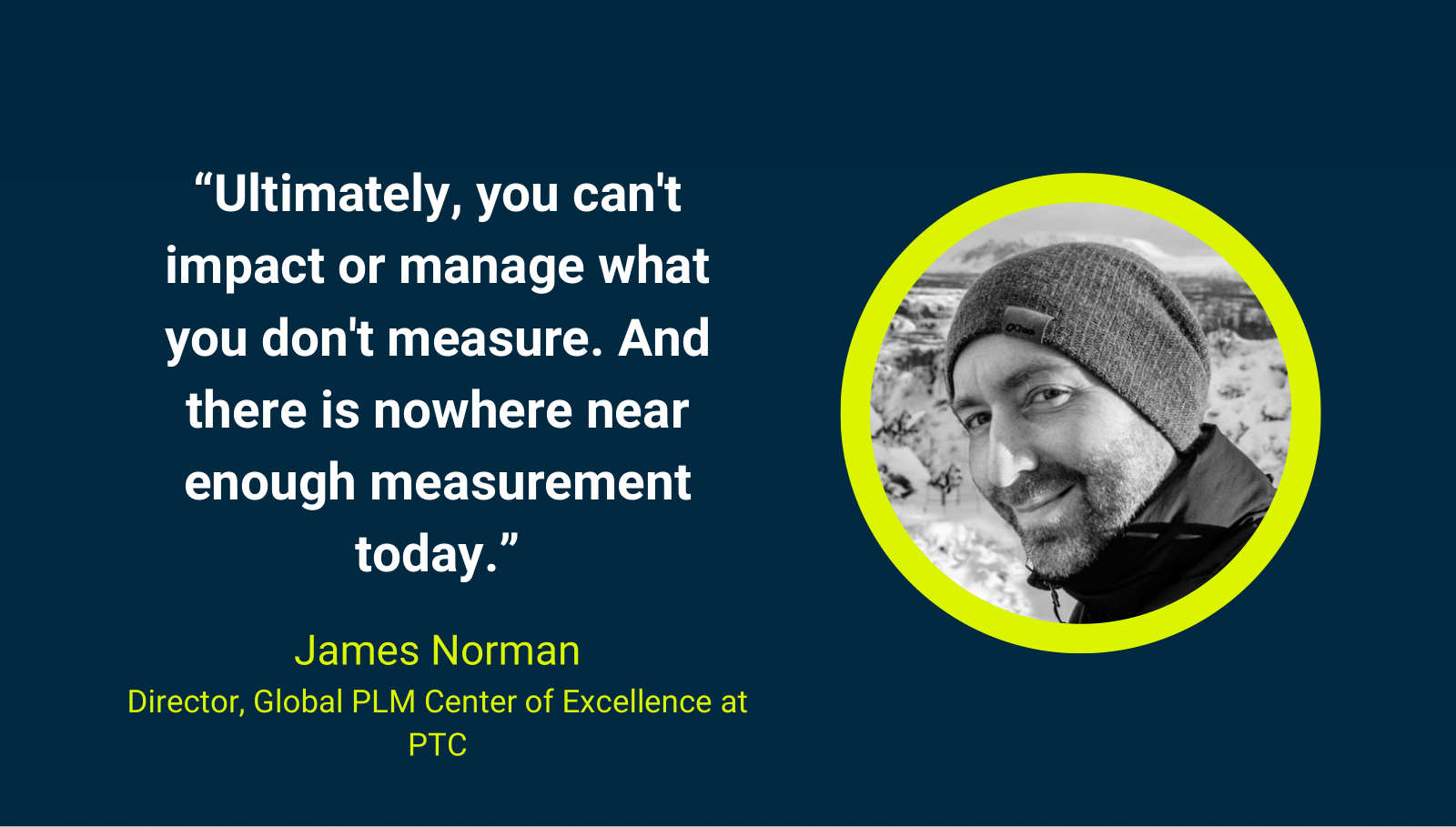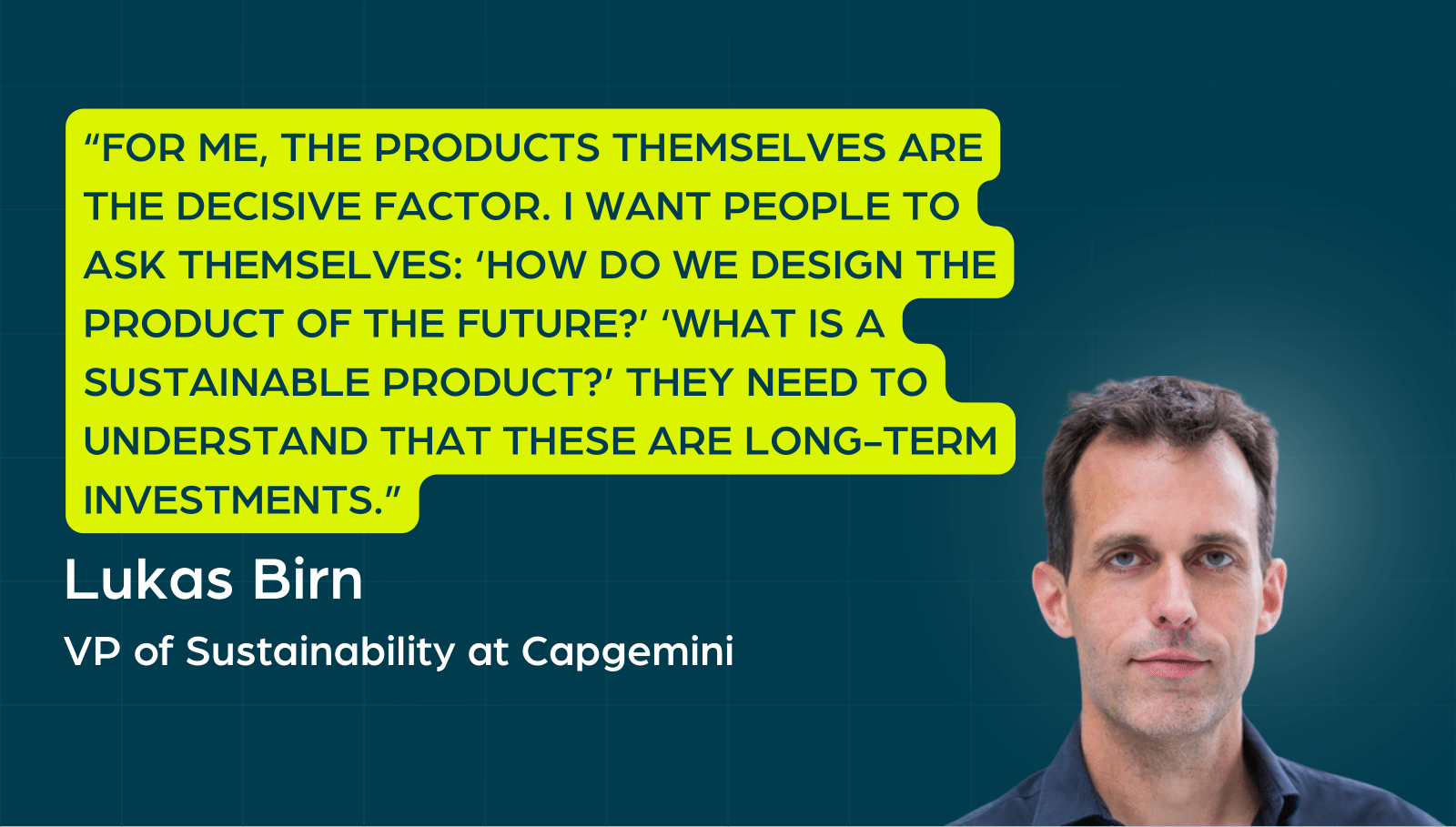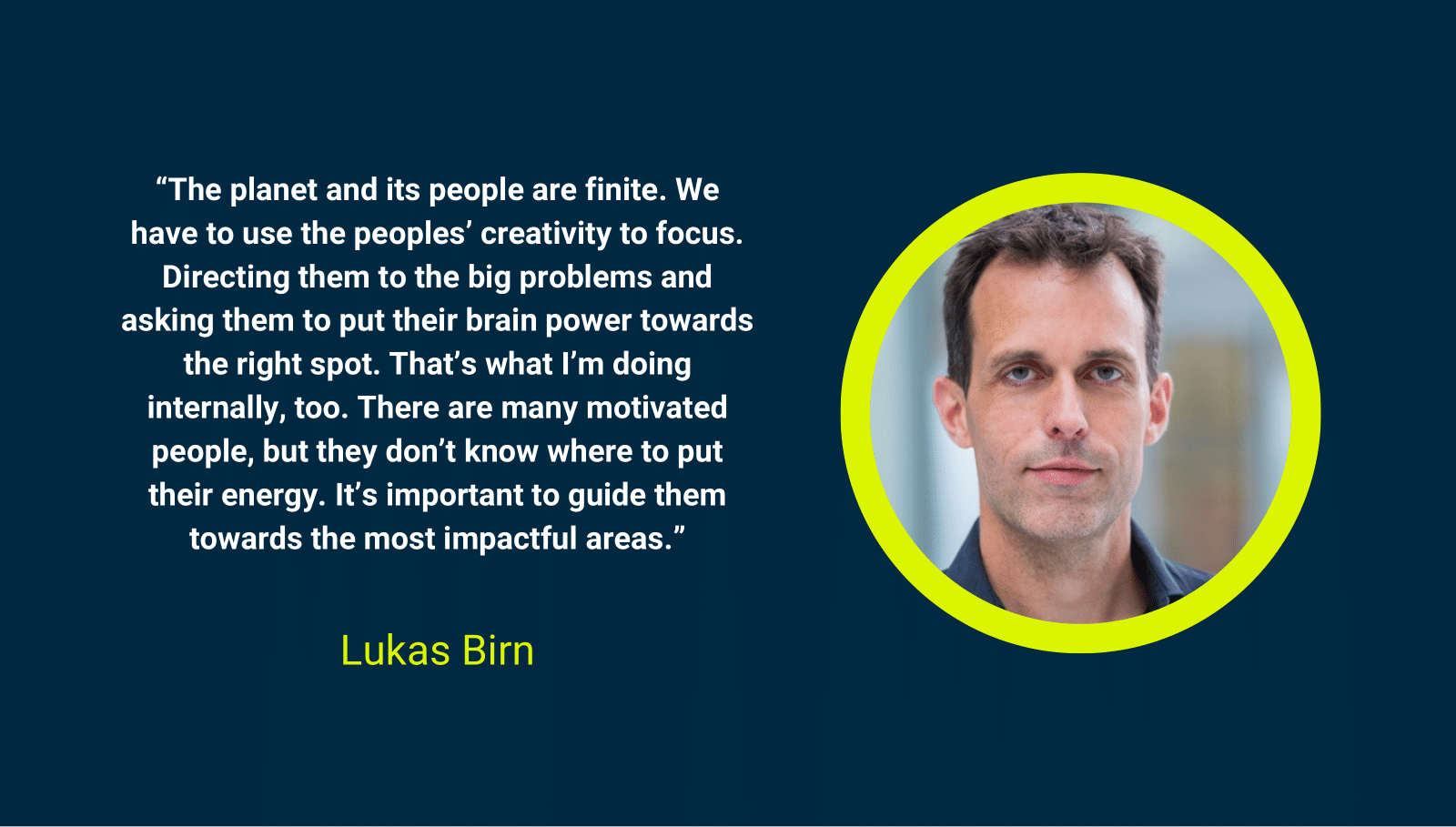

In today’s fast-paced corporate landscape, the harmony between sustainability and regulatory compliance is paramount, with an intricate web of regulations and sustainability reports creating an unprecedented imperative for enterprises to align their operational models. Leaping into the heart of these challenges, analyzing a data driven perspective is crucial for supply chain leaders and sustainability champions. It’s time to truly understand the collage of complexity emerging within the regulatory and sustainability spheres and harness this understanding to steer our enterprises toward a greener, more compliant future.
The current state – and what could be
The trajectory of manufacturing organization’s capabilities in environmental sustainability and lifecycle assessment (LCA) showcases a profound evolution. Currently, in 2024, most processes are labor-intensive, with approximately two weeks required for conducting a simple LCA, and up to 50-man days for more complex assessments. This inefficiency spans across hundreds of thousands of products, involving millions of unique components annually. The absence of ecodesign capabilities and the challenge of managing Scope 3 data accuracy are the most common gaps in present-day manufacturing enterprises. However, the outlook for the future of sustainable product manufacturing is promising and positions enterprises on the cusp of a sustainable innovation breakthrough.
The automated LCA process heralds a revolution, transforming a cumbersome task into an instantaneous, automated, and scalable operation. This leap has facilitated the assessment of an expanded portfolio of more than 500,000 products with over a million unique components, just in Makersite’s realm, shifting the frequency of Environmental Product Declarations (EPD) and Product Carbon Footprints (PCF) from an annual to an ongoing (and on demand) basis. The integration of digitized, granular data is the centerpiece of this transformation, significantly accelerating ecodesign capabilities through the precision and accessibility of the data we are able to harness.
However, pushing the start button of this transition for any enterprise can be daunting, with scattered process, strategies, and stakeholders. Nevertheless, standardizing and automating data collection, analysis, reporting, and unifying fragmented systems and data silos is a little less intimidating to take on with the right data solution.
The challenge of environmental data compliance and the competitive advantage
Today, businesses function in a global market increasingly focused on sustainability and the environmental impact of products. Those businesses must operate within a complex landscape of regulations and frameworks that demand detailed environmental data. With growing complexities in the regulatory landscape surrounding sustainability reporting, there is a clear need for the better governance of upstream environmental data, which currently faces challenges such as incomplete Bills of Materials (BOMs), unidentified sources for supplier and factory data, and the daunting task of aligning data for energy consumption calculations.
The significance of these challenges cannot be overstated, as failure to comply carries the risk of substantial penalties. However, the demand for meticulous environmental data is not just a matter of regulatory adherence — it’s also a crucial driver for achieving ambitious sustainability targets to which many businesses are now committed. Consumers, partners, and the broader market are more informed and more concerned about the environmental impact of their consumption than ever before. They require comprehensive environmental data to evaluate the sustainability attributes of products. This data empowers them to make informed choices, differentiate products, and ultimately promote environmentally friendly options over their less sustainable counterparts. The visibility of environmental credentials has become a key factor in purchasing decisions, thereby influencing sales and brand loyalty.
Additionally, market leaders and competitors are not sitting idle. There is a palpable acceleration towards the integration of sustainability data into products and corporate value propositions. This trend underscores a shift in how sustainability data is perceived — from a regulatory requirement to a strategic asset that enhances competitive advantage. Companies that successfully incorporate high-quality environmental data into their products not only meet regulatory demands but also position themselves as leaders in the transition to a greener economy.
“Product design and sourcing leaders respond to external demands by prioritizing sustainability in product development. Changing customer expectations, an emphasis on the circular economy, and supply chain transparency drive their organization’s product initiatives. Product design and sourcing leaders are addressing the intersection of sustainability, resilience, and business performance; they’re prioritizing initiatives like enhancing sustainability reporting for compliance and to support sales or optimizing reliability and efficiency when sourcing materials.”
From: Makersite and Forrester’s ‘Transform Product Sustainability into Performance Initiatives with Product Lifecycle Intelligence’ [Download]
The challenge of granular visibility in supply chains
In the wake of escalating demands for sustainability and compliance, Original Equipment Manufacturers (OEMs) and Tier 1 suppliers are at a crucial juncture. The imperative to empower a specialized team of cross-functional experts has never been more pressing. Their mission? To achieve real-time visibility into the labyrinth of their intricate supply chains. A monumental shift — from annual to monthly to real-time reporting — is required. However, this demands a seismic change in strategy and execution. With portfolios encompassing hundreds of thousands of unique products and millions of unique component parts, the scale of this challenge cannot be overstated. The objective for many is clear: to automate, scale, and future-proof the capabilities of OEMs and Tier 1 suppliers, enabling them to adeptly respond to an exponentially growing number of demands. It is conceptually simple, but operationally complex.
Furthermore, these demands are coming multiple angles: customers, industry standards, and regulatory bodies, each requiring detailed attention at the product level. The key to navigating this lies in successfully implementing an integrated data layer that not only streamlines operations but also injects carbon management and other critical upstream environmental data across various domains. By bridging the chasm between engineering, compliance, sustainability, and procurement, this strategic integration shatters longstanding data and organizational silos, paving the way for fluid decision-making processes inclusive of and informed by both data-driven insights and human expertise. Fostering this connectivity consequently positions OEMs and Tier 1 suppliers at the cutting edge of competitive advantage, fortifying their standing for the decade ahead.
Progressing towards a more integrated and responsive framework is not just about survival; it’s about seizing the opportunity to lead in the realm of sustainability and regulatory compliance. Through this visionary approach, OEMs and Tier 1 suppliers are not only adhering to the current landscape of expectations but are also shaping the future of environmental stewardship within the industry. At first glance, the proposed transformation may appear overly optimistic and deceptively simple; however, it’s important to acknowledge the complexity of the undertaking for the organization. For many, a multi-faceted strategy is essential when addressing intricate challenges in order to ensure success in sustainability endeavors, but the question remains: is extensive, manual effort truly necessary? Could there be a more streamlined approach?
The challenge of quality environmental product data
While the demand for sustainability and compliance to merge into a single force very much still exists, the Request for Proposal (RFX) process so much of the industry grapples with is undergoing a significant transformation. This change is spurred by the necessity for quality environmental product data to future-proof carbon decision-making initiatives. However, the integration of sustainability within compliance frameworks is no longer optional. With 64 countries and 12 U.S. states now imposing mandatory carbon pricing and planning, the landscape of Environmental, Social, and Governance (ESG) reporting is expected to see a 527% upsurge in Key Performance Indicators (KPIs). These developments underscore evolving global compliance dynamics, with stringent regulations on substances and materials spanning multiple continents. The consequences of non-compliance are severe, ranging from stop-orders to hefty fines — a reality many businesses are scrambling to avoid.
In sectors like electronics, automotive, and oil & gas, ecodesign is not just a trend — it’s a requirement. The push for greater transparency, especially in Scope 3 Category 1 emissions, is compelling Tier 1 suppliers to adopt a more transparent approach in the RFX process. OEMs are demanding a deeper insight across the value chain, necessitating a shift from spend-based assessments to a hybrid model fortified with defensible data from suppliers. The high-quality emissions and sustainability data needed from suppliers would be pivotal for enhancing Life Cycle Assessments (LCAs), Product Carbon Footprints (PCFs), and Environmental Product Declarations (EPDs), thereby enabling informed ecodesign decisions.
The challenge of an aging, siloed and unintegrated tech stack
OEMs and Tier 1 suppliers face three primary challenges in leveraging market opportunities effectively: the need for data aggregation, harmonization, and contextualization; reliance on obsolete digital architectures, outdated tools and processes; and the poorly governed business use cases for integrated carbon decision-making. Both OEM & Tier 1 suppliers have invested in legacy tech stacks creeping upwards of dozens to hundreds of unique tools and systems over 25-plus years.
On top of the market evolving rapidly and demanding new flexibility for ever changing requirements on data granularity and availability, and without the right tech stack set up to respond to the demand for integrated carbon decision making, market leadership and winning business is at risk. Overcoming these obstacles is not just crucial for meeting current demands but is instrumental in shaping the future of responsible manufacturing and sustainable industry practices. Companies at the forefront of prioritizing data quality, overcoming technological limitations, and mastering integrated carbon decision-making will not only align with global compliance and sustainability mandates but will also secure a leading position in the green economy of tomorrow. In the absence of that option, what alternative course of action should we pursue?
“Cross-functional collaboration, and a single source of truth is critical in enhancing product design and sourcing as well as gaining a competitive edge. Respondents agree that adopting product lifecycle intelligence drives sustainability improvements by enhancing data quality and supporting collaboration among stakeholders. They expect the solution’s business value to be reflected in a faster time to market, higher profits, and operational enhancements.”
From: Makersite and Forrester’s ‘Transform Product Sustainability into Performance Initiatives with Product Lifecycle Intelligence’ [Download]
Aggregate. Contextualize. Harmonize.
The process requires a deep understanding and application of essential steps to harness environmental data effectively by ways of data aggregation, contextualization, and harmonization. The foundation of robust carbon decision-making lies in the meticulous collection and consolidation of upstream data. This crucial first step is about securing a diverse stream of data inputs that are integral to understanding the environmental impact of products or services. The variability and complexity of these data sources necessitate a systematic approach to ensure accuracy and relevance. Companies looking to optimize their carbon footprint calculations must prioritize this data collection as a critical input to their sustainability efforts.
Once the upstream data is collected, it’s time to translate this information into actionable environmental data for products. This stage is where the carbon, cost, and compliance figures are derived. However, it’s not just about gathering data; it’s about making sense of it in a way that aligns with business goals and sustainability objectives. By aggregating upstream data effectively, companies can shed light on the environmental footprint of their offerings, enabling informed decision-making. In the digital age, the value of data is greatly enhanced by its accessibility. Focusing on the digitization and publication of consolidated environmental data involves pushing the data to platforms and repositories where it can be easily accessed by customers and stakeholders. Such transparency is not only a marker of a company’s commitment to sustainability but also serves as a differentiator in the marketplace, showcasing the environmental credentials of their products.
To elevate the integrity and market value of products, it is crucial to not only generate but also consolidate product environmental data and rigorously validate sustainability claims. This consolidation involves synthesizing collected and upstream data into coherent, actionable insights that accurately represent a product’s environmental footprint. By doing so, businesses can ensure that their sustainability claims are not merely aspirational but are firmly rooted in empirical data.
But how do we validate? Validation should be conducted through third-party audits or by employing recognized sustainability frameworks and standards. This thorough vetting process not only fortifies the credibility of a company’s sustainability assertions but also amplifies consumer trust. In aligning closely with the data-driven methodologies outlined previously, businesses can assert their sustainability claims with confidence, offering tangible proof of their commitment to environmental stewardship. This not only meets the growing demand for transparency in the green market but also positions companies at the forefront of sustainable innovation, distinguishing them in a competitive landscape.
With the strategic use of Life Cycle Assessment (LCA) methodologies, businesses are able to calculate and understand the comprehensive environmental impact of their products, from CO2 emissions to broader sustainability metrics. The digital era demands that this rich environmental data be made accessible through digitization and publication, enhancing transparency, and distinguishing a company’s products in the competitive marketplace by their environmental credentials.
A meaningful, holistic approach
Generating compliance data is not just about avoiding penalties but also about upholding a commitment to environmental stewardship. This extends to leveraging Life Cycle Assessment (LCA) methodologies to calculate the impact of products on the environment comprehensively. By employing LCA, organizations can generate CO2 emissions data and other quantitative indicators that offer insights into the overall environmental footprint of their products or services. The implications for the EHS&S professionals are manifold, involving an enhanced capacity for instant automated LCA calculation, on-demand automation and scalability for assessing the environmental impact of vast product portfolios, and the fast-tracking of ecodesign driven by accurate, digitized, and granular data.
Enterprises pursuing a holistic approach encompassing compliance with environmental regulations, the adoption of ecodesign principles to minimize lifecycle impacts, and the pursuit of decarbonization efforts to reduce greenhouse gas emissions meaningfully can enhance their market value proposition through clear communication of their product’s environmental credentials. These objectives will serve as guiding principles for utilizing environmental data to support decisive action across the spectrum of sustainability practices, empowering businesses to not just participate in the green economy, but to lead and innovate within it.
